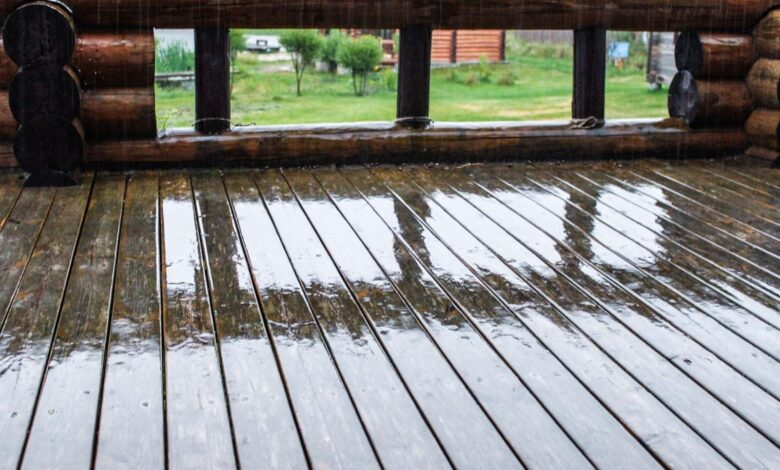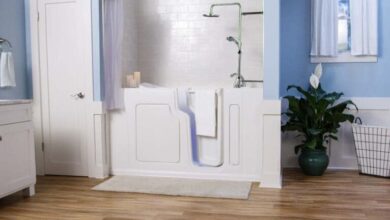How Often Should You Re-Seal or Re-Waterproof Your Deck?

Your deck is more than just an outdoor space — it’s where you relax, entertain guests, and enjoy the fresh Washington air. But with constant exposure to rain, snow, and sun, even the most well-built decks can start showing signs of wear. The key to keeping your deck in great shape is regular maintenance — especially re-sealing and re-waterproofing.
So, how often should you do it? And how can you tell when it’s time? Let’s break it down.
1. Why Deck Waterproofing Matters
Washington State is known for its damp climate. Between heavy rains, morning dew, and occasional freezing temperatures, your deck faces a constant battle with moisture. Without proper sealing or waterproofing, water can seep into the wood, leading to:
- Cracks and warping
- Mold and mildew growth
- Rot and structural damage
- Faded color and peeling finishes
A good waterproof coating acts like a shield. It locks out water, prevents UV damage, and extends the life of your deck — saving you money on major repairs or replacements later.
2. General Rule: Every 2–3 Years
For most decks in Washington, it’s best to re-seal or re-waterproof every two to three years. However, this can vary depending on several factors:
- Deck material: Softwoods like cedar or pine may need more frequent sealing. Composite or waterproof-coated decks can go longer.
- Weather exposure: Decks that get a lot of rain, snow, or direct sunlight may need annual touch-ups.
- Foot traffic: Heavily used decks wear faster and lose their protective coating sooner.
- Previous treatments: The type of sealer or coating used last time also affects longevity.
To be safe, make it a habit to inspect your deck every spring. Look for early signs that your waterproof barrier may be wearing down.
3. Signs Your Deck Needs Re-Sealing
It’s not always easy to tell when your deck’s protection is fading, but a few simple tests can help.
- Water test: Sprinkle water on the surface. If it beads up, your seal is still working. If it soaks in, it’s time to reseal.
- Discoloration: Faded or grayish areas show that UV rays have broken down the top layer.
- Soft or dark spots: These could signal trapped moisture and early rot.
- Peeling or flaking finish: Indicates the waterproof layer has failed and needs reapplication.
Catching these signs early can help you avoid more serious — and costly — damage down the road.
4. Benefits of Regular Deck Sealing
Re-sealing your deck isn’t just about looks; it’s about protection and longevity.
Here’s what you gain from staying consistent with waterproofing:
- Longer lifespan: Protects the deck from premature decay.
- Better appearance: Keeps wood grain vibrant and smooth.
- Slip resistance: Helps prevent slippery surfaces during wet seasons.
- Lower repair costs: Prevents issues before they turn into expensive replacements.
A small investment in regular maintenance goes a long way toward keeping your outdoor space safe and beautiful.
5. Choosing the Right Product for Your Deck
Not all waterproofing products are the same. The right choice depends on your deck’s material and how it’s used.
- Clear sealers: Great for showing off the natural wood grain, but they need more frequent reapplication.
- Semi-transparent stains: Offer color while still letting the wood’s texture show through.
- Solid stains: Provide maximum UV protection and durability but hide most of the wood grain.
- Waterproof coatings: Best for decks that need extra protection, especially those exposed to heavy rain or located near the coast.
If you’re unsure which option works best, talk to a deck waterproofing professional in Washington who can assess your specific conditions and recommend the most durable solution.
6. Weather Timing: When to Re-Seal
Timing matters. Applying sealant in the wrong conditions can affect how well it bonds and protects.
Here’s when to do it:
- Choose a dry, mild day with no rain expected for at least 48 hours.
- Temperatures should be between 50°F and 80°F for best results.
- Avoid direct sunlight, which can cause the product to dry too quickly and form bubbles.
Many homeowners in Washington find late spring or early fall ideal for waterproofing projects.
7. DIY vs. Professional Deck Waterproofing
While some homeowners prefer the DIY route, hiring an expert often provides better, longer-lasting results. Professionals use commercial-grade coatings, prep the surface properly, and ensure even application — steps that make a big difference in long-term protection.
If you notice ongoing water damage or soft spots, it’s worth calling a local waterproof deck repair company that specializes in restoring and sealing older decks. They can repair the damage and apply a high-quality waterproof layer to prevent future issues.
8. How to Extend the Life of Your Waterproofing
Once your deck is sealed, a little maintenance will help keep it looking great longer.
- Sweep regularly to prevent dirt and debris buildup.
- Clean with a mild detergent every few months.
- Move furniture around occasionally to avoid uneven wear.
- Trim nearby plants to improve airflow and reduce moisture.
Consistent care not only preserves your waterproof finish but also keeps your deck safe and inviting all year long.
Final Thoughts
Your deck is constantly exposed to Washington’s unpredictable weather — from heavy rain in the winter to hot summer days. Re-sealing or re-waterproofing it every few years isn’t just good maintenance; it’s essential for protecting your investment.
A well-maintained deck lasts longer, looks better, and adds real value to your home. So, don’t wait until the damage becomes visible — stay ahead with regular inspections and timely waterproofing.
If your deck shows signs of water damage or fading protection, consider reaching out to experienced waterproof deck repair specialists in Washington who can restore its strength and beauty for years to come.




